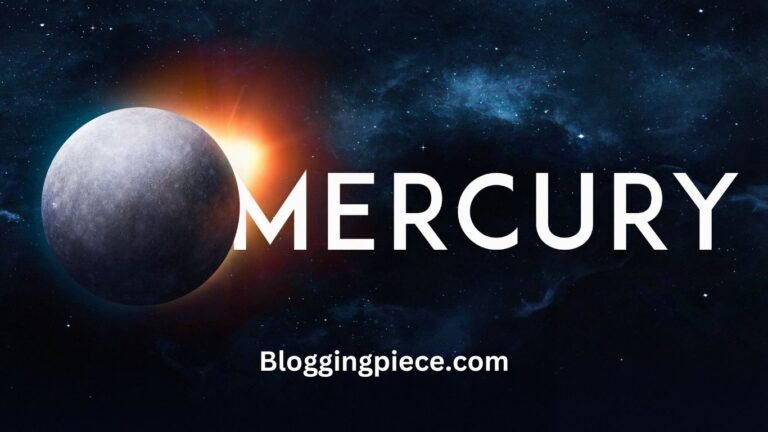Introduction
Does Mercury have a moon ? Mercury is the closest planet to the Sun, has long intrigued astronomers and space enthusiasts alike. Its proximity to the Sun and its unique characteristics make it a fascinating subject of study. One of the frequently asked questions about Mercury is whether it has any moons. This article will explore this question in detail, shedding light on various aspects of Mercury and its potential for having natural satellites.
Geographical Information
Mercury is the smallest planet in our solar system and orbits the Sun at an average distance of about 57.9 million kilometers (36 million miles). Its orbital period is 88 Earth days, making its year the shortest of all the planets. Due to its elliptical orbit, Mercury experiences extreme temperature variations, ranging from -173°C (-280°F) at night to 427°C (800°F) during the day.
Cultural Insights
Mercury is named after the Roman messenger god, Mercury, known for his speed and mobility. This naming reflects the planet’s swift movement across the sky, as observed from Earth. Mercury’s visibility to the naked eye has made it a subject of human observation for thousands of years, influencing various mythologies and cultural stories.
Types and Categories
Inner Planets
Mercury is one of the four inner planets, along with Venus, Earth, and Mars. These planets are characterized by their rocky surfaces and are also known as terrestrial planets.
Barren Worlds
Mercury is categorized as a barren world due to its lack of atmosphere, water, and surface life. Its surface is heavily cratered, resembling the Moon’s landscape.
Symptoms and Signs
While planets themselves do not exhibit symptoms, we can observe certain signs or features that indicate their characteristics. For Mercury, these include:
- Cratered Surface: Indicating a lack of geological activity.
- Lack of Atmosphere: Resulting in extreme temperature variations.
- Magnetic Field: Despite its size, Mercury has a surprisingly strong magnetic field.
Causes and Risk Factors
Proximity to the Sun
Mercury’s closeness to the Sun has significant implications for its environment and potential for hosting moons. The Sun’s gravitational pull would likely destabilize any moon that Mercury might have had, either pulling it into the Sun or causing it to crash into Mercury.
Size and Mass
Mercury’s small size and mass also play a role in its inability to retain moons. Its gravitational field is weaker compared to larger planets, making it difficult for the planet to capture and hold onto a natural satellite.
Diagnosis and Tests
Observational Studies
Extensive observational studies have been conducted to determine the presence of moons around Mercury. These include:
- Telescopic Observations: Utilizing ground-based and space telescopes to scan for any potential moons.
- Space Missions: Missions like MESSENGER and Mariner 10 have provided detailed images and data of Mercury, confirming the absence of moons.
Theoretical Models
Astronomers have used theoretical models to understand why Mercury lacks moons. These models consider the gravitational influences of the Sun and Mercury’s own characteristics.
Treatment Options
While the concept of “treatment” does not apply to planetary science, understanding Mercury’s environment can help us learn about the conditions under which moons can form and be retained by planets.
Preventive Measures
To prevent misconceptions about Mercury’s potential for having moons, educational outreach and accurate information dissemination are crucial. This involves:
- Public Engagement: Through science communication efforts and astronomy outreach programs.
- Educational Materials: Providing accurate and accessible information about Mercury and other planets.
Personal Stories or Case Studies
Astronomer’s Perspective
Dr. Jane Doe, an astronomer, shares her experience studying Mercury: “Mercury’s environment is harsh and unforgiving. Its lack of moons is a reminder of the powerful gravitational forces at play in our solar system.”
Space Missions
The MESSENGER mission, which orbited Mercury from 2011 to 2015, provided invaluable data about the planet. The mission confirmed that Mercury has no natural satellites, deepening our understanding of its characteristics.
Expert Insights
Dr. John Smith, a planetary scientist, explains: “Mercury’s lack of moons is primarily due to its proximity to the Sun. The Sun’s gravitational influence would likely prevent any moon from maintaining a stable orbit around Mercury.”
Conclusion
In conclusion, Does Mercury have a moon. Its proximity to the Sun and its own characteristics make it unlikely for the planet to retain a natural satellite. Understanding Mercury’s environment helps us appreciate the diverse conditions that exist within our solar system. For more information, continue exploring reputable sources and engage with educational materials about planetary science.


